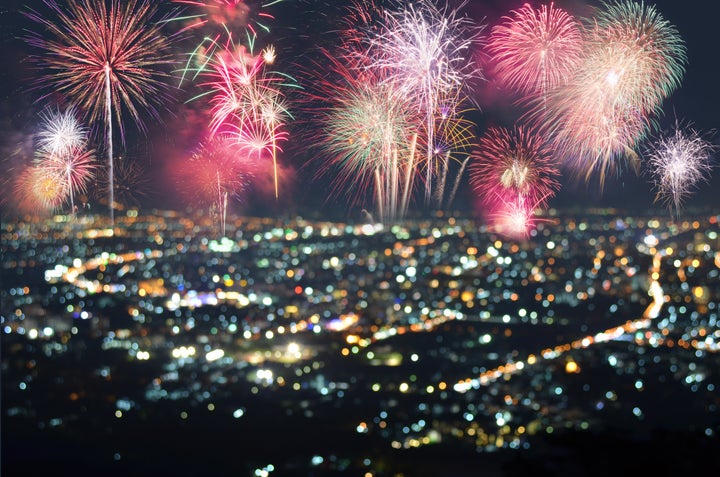
Fireworks are magical: think cold, gloved hands tucked into fleecy pockets on Bonfire Night as hundreds of eyes look up at a crisp dark sky bedazzled by exploding colours and patterns.
Or explosive, spectacular displays to celebrate Diwali or New Year’s Eve.
Asthma UK has warned that bonfires and fireworks could spark potentially fatal asthma attacks and advises sufferers to carry their inhaler with them at all times, and to step back from displays if they feel wheezy.
So what goes into fireworks to make them pop and should we be worried about what’s left behind after they go bang? According to Dr Gary Fuller, from King’s College London’s Environmental Research Group, the answer is yes.
Those dazzling rockets and Catherine wheels are made up of chemicals and matter that pollute the air and the ground. “Fireworks are great fun, let’s not forget that, but they create a lot of small particles, and you can think of them in some ways as soot and smoke,” Fuller previously told HuffPost UK.
“The colours that you see in the sky and the chemicals that propel the fireworks up into the air and the explosives contain a lot of toxic chemicals.
“If you remember at school when you did those experiments in chemistry, when you put tiny fragments of metals into a Bunsen burner flame and they made lovely, pretty colours – that’s exactly the same as what’s happening with our fireworks.”
Exciting as they are, fireworks emit chemicals and metals that aren’t good for us, or the environment. The smoke, Fuller explains, “does dissipate”, but some of the chemicals and tiny chemical fragments fall to the ground, and have been known to make their way into water systems.
“If it’s a cold, still night, then fireworks night can be the most polluted night of the year in the UK,” he said. “Concentrations of particle pollution can be up there in the many hundreds of micrograms per cubic metre, approaching the sorts of concentrations that could be seen in Beijing on a bad day.”
Are there any sustainable alternatives?
Not completely. Some fireworks have stopped using perchlorates – a chemical which aids in the propelling process and in some studies has been linked to thyroid problems. Or for a more environmentally-friendly alternative, you could opt for a laser show instead.
“We worry about the metal toxicity as many of the metals in the fireworks that make the pretty colours are exactly the metals that we make industry pay a lot of money to filter out of their factory [chimneys],” he said.
“Be it power stations, steel works, or waste incineration – they all have to invest a lot to clean these metals and other pollutants. But yet on fireworks night we just throw a load of it into our urban air without controls.”